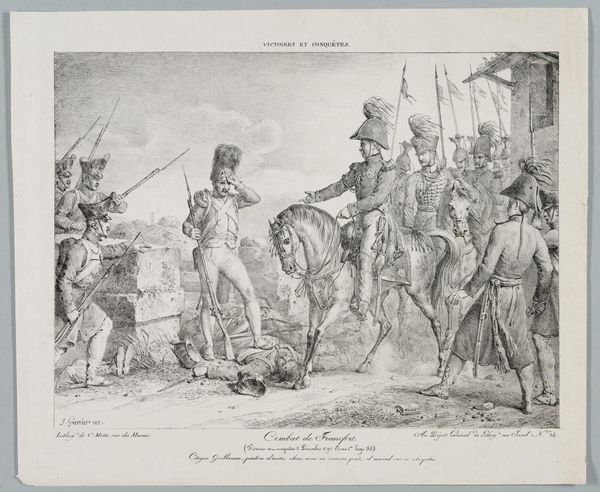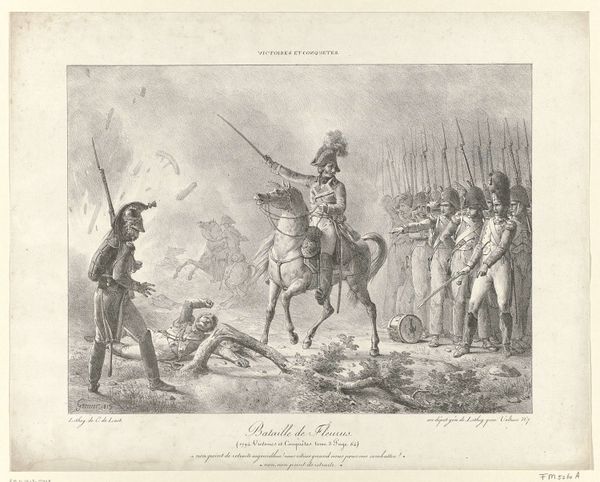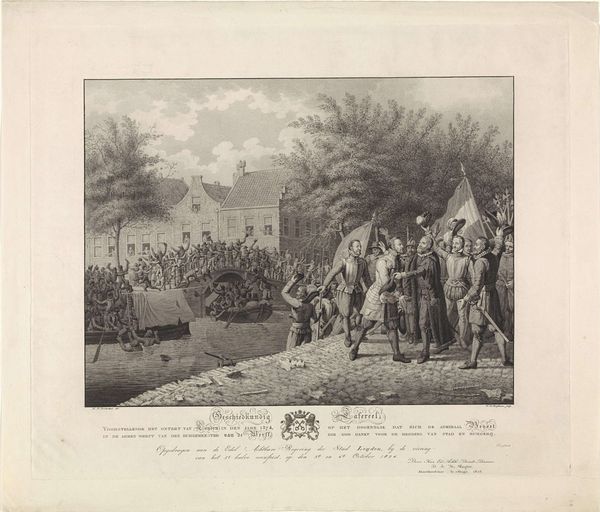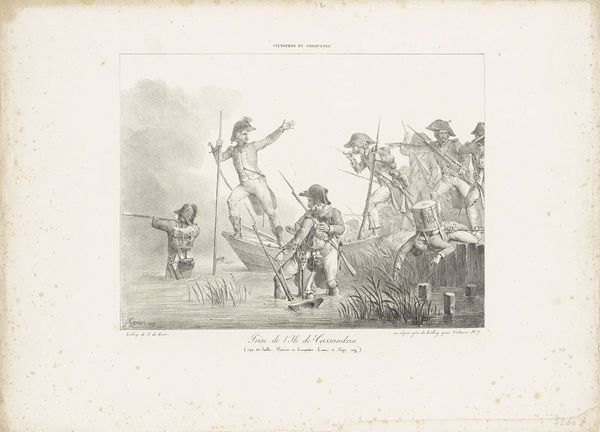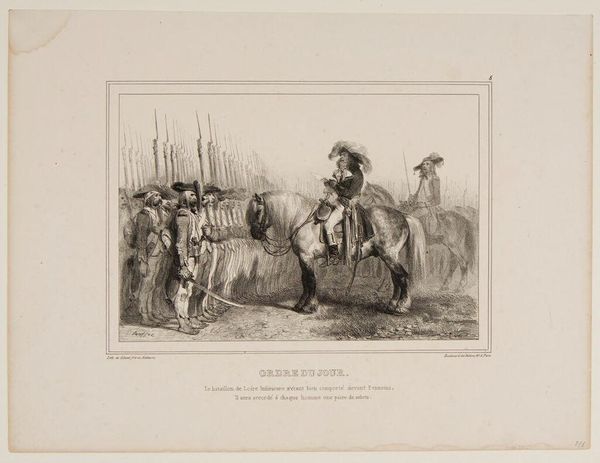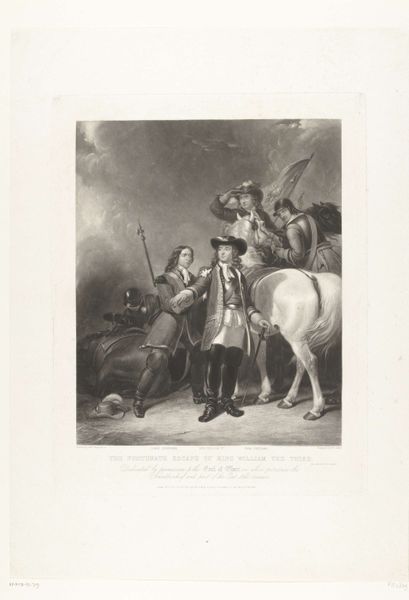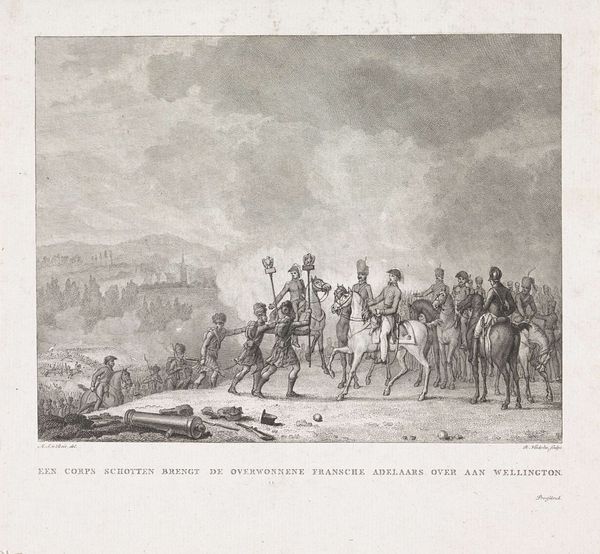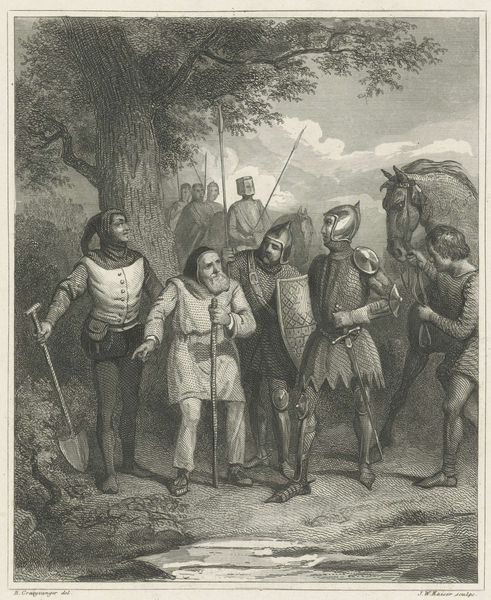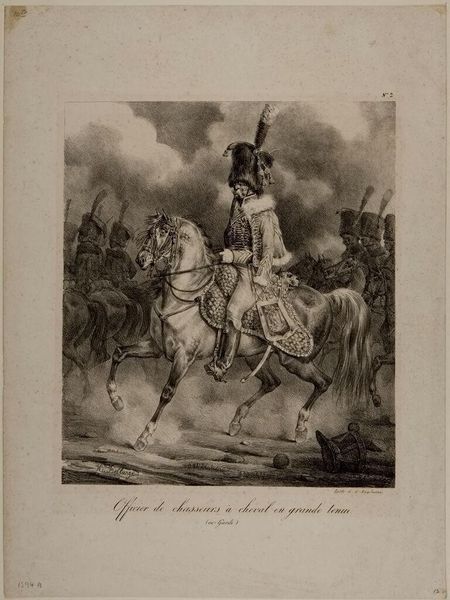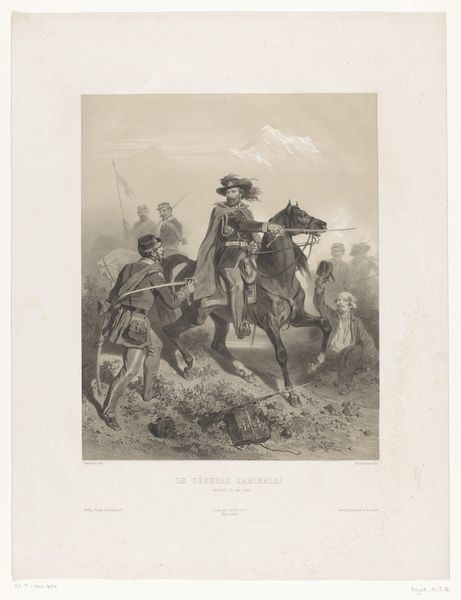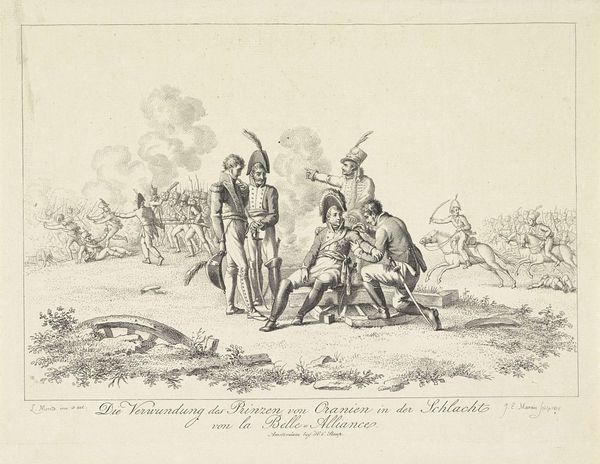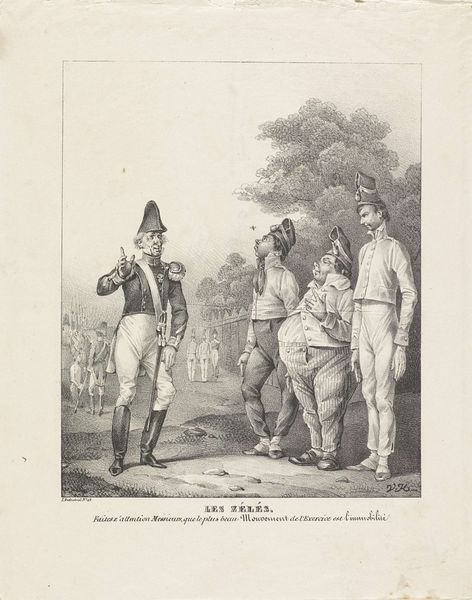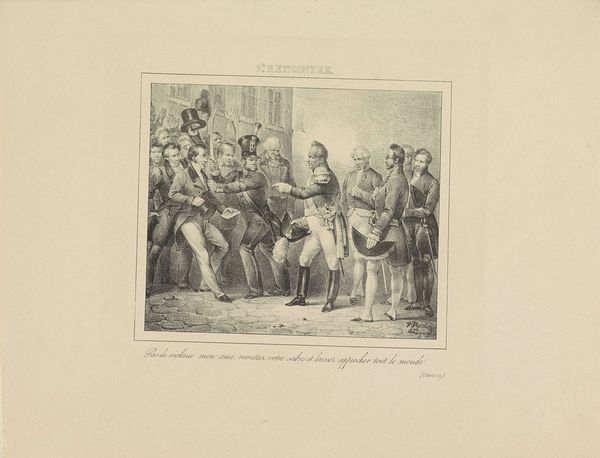
print, engraving
#
narrative-art
# print
#
history-painting
#
engraving
#
realism
Dimensions: height 273 mm, width 221 mm
Copyright: Rijks Museum: Open Domain
Curator: Today we’re looking at “Zesde beproeving, 1828”, or “Sixth Tribulation,” an engraving by Jean-Louis Van Hemelryck. Created in 1828, it presents a stark scene in monochromatic detail. What’s your first reaction? Editor: A firing squad. Brrr, instantly gives me the chills. The stark realism makes it incredibly unnerving. And I can’t help but think about how readily reproducible this image would have been with engraving – imagine the social impact! Curator: Exactly. The means of production—the meticulous engraving process, the potential for mass dissemination—speaks volumes about the artwork's intention. It forces us to think about accessibility and audience. The subject being history and punishment raises important points. Editor: The artist has definitely captured the grim efficiency of it all. Those precise lines emphasize the rigid structure, almost as if dehumanizing the people in the firing squad by treating them as instruments. The church steeple in the background feels terribly out of place, as if life were continuing somewhere for others. Curator: Consider the social context. Realism, as a style, came into its own, striving to depict the unvarnished truth of events. So this piece isn’t glorifying anything; it is documenting or even protesting the practice of penal executions. It offers viewers access to seeing how discipline and labor would appear outside the studio space, in reality. Editor: There’s this powerful interplay between light and shadow – notice the strong light pooling around the condemned and the leader. It creates such drama; it's like a stage where only these individuals have their time. Also, that stark contrast highlights the bleakness of it all, a reminder of the work to complete and the task ahead. Curator: Right, Van Hemelryck’s choices reveal so much about his potential motivations and the society for which this piece was made. Its wide circulation raises key points to the consumption of these prints too: Are people learning? Being entertained? Reflecting? We are left to ponder that through his material. Editor: It certainly offers much to mull over, that's true. After spending some time observing it, the initial iciness has shifted to a deeper contemplation. All I could really see before was brutality, and I leave with more profound considerations of our societal rituals surrounding life and death. Curator: I agree entirely. Examining both the means and ends is important for viewers today and in the past. We gain a nuanced sense of Van Hemelryck and "Zesde beproeving’s" purpose when appreciating both material conditions alongside artistry.
Comments
No comments
Be the first to comment and join the conversation on the ultimate creative platform.
